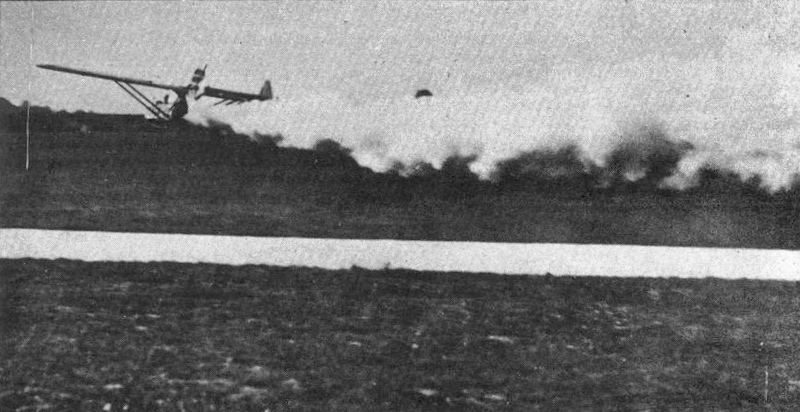|
Pressure Wave Supercharger
A pressure wave supercharger (also known as a wave rotor) is a type of supercharger technology that harnesses the pressure waves produced by an internal combustion engine exhaust gas pulses to compress the intake air. Its automotive use is not widespread; the most widely used example is the ''Comprex'', developed by Brown Boveri.A Review of Wave Rotor Technology and its Applications including details of Comprex supercharger In automobiles Valmet Tractors of Finland were one of the first to use the device when they fitted it to the 411CX engine which powered their 1203 model of 1980. Although it provided a useful increase in performance it was considered too expensive to be incorporated into later mo ...[...More Info...] [...Related Items...] OR: [Wikipedia] [Google] [Baidu] |
Opel
Opel Automobile GmbH (), usually shortened to Opel, is a German automobile manufacturer which has been a subsidiary of Stellantis since 16 January 2021. It was owned by the American automaker General Motors from 1929 until 2017 and the PSA Group prior to its merger with Fiat Chrysler Automobiles to form Stellantis in 2021. Most of the Opel lineup is marketed under the Vauxhall Motors, Vauxhall brand in the United Kingdom since the 1980s. Some Opel vehicles were badge engineering, badge-engineered in Australia under the Holden brand until 2020, in North America and China under the Buick, Saturn Corporation, Saturn (until 2010), and Cadillac brands, and in South America under the Chevrolet brand. Opel traces its roots to a sewing machine manufacturer founded by Adam Opel in 1862 in Rüsselsheim am Main. The company began manufacturing bicycles in 1886 and produced its first automobile in 1899. With the Opel RAK program, the world's first rocket program, under the leadership of F ... [...More Info...] [...Related Items...] OR: [Wikipedia] [Google] [Baidu] |
Ferrari 126C
The Ferrari 126C is the car with which Ferrari raced from the 1981 through the 1984 Formula One season. The team's first attempt at a turbocharged Formula 1 car, it was designed by Mauro Forghieri and Harvey Postlethwaite. The engine chief engineer was Nicola Materazzi. Development and race history 126C (1981): Comprex vs turbo The Ferrari 126C was designed to replace the highly successful but obsolete 312T series in use since . The basic chassis was almost identical to the previous car but the smaller and narrower V6 engine with forced induction, better suiting the ground effect aerodynamics now needed to be competitive (the previous car's wide 180° V12 engine obstructed the airflow necessary to generate efficient ground effect), and was a better package overall. During engine development Ferrari started experimenting with a ''Comprex'' pressure wave supercharger, supplied by a Swiss company; this car version was initially called 126BBC from the name of Brown Boveri Com ... [...More Info...] [...Related Items...] OR: [Wikipedia] [Google] [Baidu] |
Kadenacy Effect
The Kadenacy effect is an effect of pressure-waves in gases. It is named after Michel Kadenacy who obtained a French patent for an engine utilizing the effect in 1933. There are also European and US patents. In simple terms, the momentum of the exhaust gas leaving the cylinder of an internal combustion engine creates a pressure-drop in the cylinder which assists the flow of a fresh charge of air, or fuel-air mixture, into the cylinder. The effect can be maximized by careful design of the inlet and exhaust passages. Uses The Kadenacy effect has been utilized in pulse jet engines and in two-stroke piston engines and is important in the design of high-performance motorcycle engines. Pulse jets Two-stroke engines In a two-stroke engine the pressure-drop resulting from the Kadenacy effect assists the flow of a fresh fuel-air mixture charge into the cylinder. However, the Kadenacy effect alone is not sufficient and must be boosted in some way. In small engines this is done by crankcas ... [...More Info...] [...Related Items...] OR: [Wikipedia] [Google] [Baidu] |
Inertial Supercharging Effect
The inertial supercharging effect is the increase of volumetric efficiency in the cylinder of an engine. Background The internal combustion engine is a very common engine found in mechanical devices across the world. The engine is powered by an air/gasoline mixture and the physics principles of heat and pressure. Overview Inertial supercharging effect is the result of incoming fuel/air charge developing momentum greater than intake stroke would generate alone. It is achieved by the careful design of the shape of the piston head, the valves and cam profile/ valve timing which creates a vacuum that pulls more exhaust gases (and some of the intake gasses) out of the engine. This is immediately followed by a reflected pressure wave timed to force the extra intake gasses back into the cylinder, thus achieving a greater mass of air/fuel mix in the combustion chamber than possible with conventional methods. Expansion chambers only work well at a narrow engine speed range which is wh ... [...More Info...] [...Related Items...] OR: [Wikipedia] [Google] [Baidu] |
Exhaust Pulse Pressure Charging
Exhaust pulse pressure charging (EPPC) is a system for supercharging two-stroke diesel engines of the loop-scavenge type. Loop-scavenge engines cannot be pressure-charged in the same way as uniflow engines or four-stroke engines because the inlet and exhaust ports are open at the same time. Overview The engine usually has a Roots blower to provide air for scavenging and this is arranged to deliver excess air so that air follows the exhaust gases into the exhaust manifold. Some of this air is then forced back into the cylinder by a rise in pressure in the exhaust manifold resulting from the exhaust pulse from another cylinder. For additional pressure charging a turbocharger may be fitted, in series with the Roots blower, but a turbocharger cannot be used alone as it would not provide enough air for scavenging at low speeds. Examples Exhaust pulse pressure charging was used by Crossley in these diesel locomotive engines: * the HST-Vee 8, used in the British Rail Class 28, the C ... [...More Info...] [...Related Items...] OR: [Wikipedia] [Google] [Baidu] |
Diesel Kiki
Zexel is a Japanese automotive components manufacturer. It was founded in 1939 as Diesel Kiki Co., Ltd., under a Bosch license, for domestic production of fuel-injection pumps for diesel engines. Originally established with an investment from Isuzu, this company was renamed ZEXEL Corp. in 1990. Diesel-Kiki entered into a joint venture in the United States with Wynns Climate Systems to begin manufacturing automotive HVAC systems in approximately 1987. The company was called Wynn-Kiki at the time and was the predecessor to ZEXEL USA. The ZEXEL rebranding was a two-year project involving a worldwide name search and complete marketing strategy analysis. The company logo featured red, white and blue colors picked to represent precision, technology and excellence. A CD was distributed to employees featuring a new company theme song. The name was compiled from the words zenith and excellence. The company is said to have reached the zenith of its performance under its old name of Dies ... [...More Info...] [...Related Items...] OR: [Wikipedia] [Google] [Baidu] |
Crankshaft
A crankshaft is a mechanical component used in a reciprocating engine, piston engine to convert the reciprocating motion into rotational motion. The crankshaft is a rotating Shaft (mechanical engineering), shaft containing one or more crankpins, that are driven by the pistons via the connecting rods. The crankpins are also called ''rod bearing journals'', and they rotate within the "big end" of the connecting rods. Most modern crankshafts are located in the engine block. They are made from steel or cast iron, using either a forging, casting (metalworking), casting or machining process. Design The crankshaft is located within the engine block and held in place via main bearings which allow the crankshaft to rotate within the block. The up-down motion of each piston is transferred to the crankshaft via connecting rods. A flywheel is often attached to one end of the crankshaft, in order to smoothen the power delivery and reduce vibration. A crankshaft is subjected to enormou ... [...More Info...] [...Related Items...] OR: [Wikipedia] [Google] [Baidu] |
Pressure Wave Supercharger
A pressure wave supercharger (also known as a wave rotor) is a type of supercharger technology that harnesses the pressure waves produced by an internal combustion engine exhaust gas pulses to compress the intake air. Its automotive use is not widespread; the most widely used example is the ''Comprex'', developed by Brown Boveri.A Review of Wave Rotor Technology and its Applications including details of Comprex supercharger In automobiles Valmet Tractors of Finland were one of the first to use the device when they fitted it to the 411CX engine which powered their 1203 model of 1980. Although it provided a useful increase in performance it was considered too expensive to be incorporated into later mo ...[...More Info...] [...Related Items...] OR: [Wikipedia] [Google] [Baidu] |
Gas Turbine
A gas turbine or gas turbine engine is a type of Internal combustion engine#Continuous combustion, continuous flow internal combustion engine. The main parts common to all gas turbine engines form the power-producing part (known as the gas generator or core) and are, in the direction of flow: * a rotating gas compressor * a combustor * a compressor-driving turbine. Additional components have to be added to the gas generator to suit its application. Common to all is an air inlet but with different configurations to suit the requirements of marine use, land use or flight at speeds varying from stationary to supersonic. A propelling nozzle is added to produce thrust for flight. An extra turbine is added to drive a propeller (turboprop) or ducted fan (turbofan) to reduce fuel consumption (by increasing propulsive efficiency) at subsonic flight speeds. An extra turbine is also required to drive a helicopter rotor or land-vehicle transmission (turboshaft), marine propeller or electric ... [...More Info...] [...Related Items...] OR: [Wikipedia] [Google] [Baidu] |
NASA
The National Aeronautics and Space Administration (NASA ) is an independent agencies of the United States government, independent agency of the federal government of the United States, US federal government responsible for the United States's civil list of government space agencies, space program, aeronautics research and outer space, space research. National Aeronautics and Space Act, Established in 1958, it succeeded the National Advisory Committee for Aeronautics (NACA) to give the American space development effort a distinct civilian orientation, emphasizing peaceful applications in space science. It has since led most of America's space exploration programs, including Project Mercury, Project Gemini, the 1968–1972 Apollo program missions, the Skylab space station, and the Space Shuttle. Currently, NASA supports the International Space Station (ISS) along with the Commercial Crew Program and oversees the development of the Orion (spacecraft), Orion spacecraft and the Sp ... [...More Info...] [...Related Items...] OR: [Wikipedia] [Google] [Baidu] |
SmILE
A smile is a facial expression formed primarily by flexing the muscles at the sides of the mouth. Some smiles include a contraction of the muscles at the corner of the eyes, an action known as a Duchenne smile. Among humans, a smile expresses delight, sociability, happiness, joy, or amusement. It is distinct from a similar but usually involuntary expression of anxiety known as a grimace. Although cross-cultural studies have shown that smiling is a means of communication throughout the world, there are large differences among different cultures, religions, and societies, with some using smiles to convey confusion, embarrassment, or awkwardness. Evolutionary background Primatologist Signe Preuschoft traces the smile back over 30 million years of evolution to a "fear grin" stemming from monkeys and apes, who often used barely clenched teeth to portray to predators that they were harmless or to signal submission to more dominant group members. The smile may have evolved differ ... [...More Info...] [...Related Items...] OR: [Wikipedia] [Google] [Baidu] |




